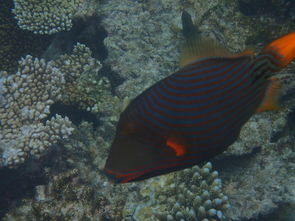Content:
Fishing, an age-old pastime that has captivated anglers across the globe, is both a science and an art. One of the most crucial aspects of fishing is understanding how to outsmart the fish and successfully catch your bait. In this article, we will delve into the intricacies of fish behavior and share some valuable tips and techniques to help you become a master angler. Let's start by addressing the burning question: how do fish eat the hook, and how can you use this knowledge to your advantage?
Understanding Fish Behavior
Before we dive into the nitty-gritty of fishing techniques, it's essential to have a basic understanding of fish behavior. Fish are highly sensitive to their surroundings and are constantly on the lookout for potential threats. When they encounter a bait, they are cautious and often take a few moments to inspect it before deciding whether to eat it or not.
Here are some key points to consider when analyzing fish behavior:
Appetite: Fish are more likely to eat a bait when they are hungry. It's crucial to time your fishing trips according to the feeding patterns of the species you're targeting.
Visibility: Fish have excellent eyesight, so it's important to use baits and lures that mimic the natural prey of the fish you're trying to catch.
Scent: The scent of your bait can be a significant factor in attracting fish. Strong, natural scents can make your bait more appealing.
Water Temperature: Water temperature affects fish metabolism and feeding patterns. Understanding how temperature influences fish behavior can help you choose the right time and location for your fishing trip.
Now that we have a grasp on fish behavior, let's explore some techniques to help you outsmart the fish and catch your bait.
Choosing the Right Bait: The type of bait you use can make a significant difference in your fishing success. Here are some popular bait options and their strengths:
Live Bait: Live bait, such as worms, minnows, and leeches, can be highly effective because they move naturally and have a strong scent. However, they can be more challenging to keep alive and can be expensive.
Artificial Lures: Artificial lures come in various shapes, sizes, and colors, making them versatile for different fishing situations. They can be less expensive than live bait and can be used for a wide range of fish species.
Natural Baits: Natural baits, such as bread, cheese, or corn, can be effective for certain species, but they may not be as appealing to picky fish.
Using the Right Fishing Technique: Different fishing techniques can be used to attract and catch various fish species. Here are some popular techniques:
Cast and Retrieve: This technique involves casting your lure or bait out into the water and retrieving it back at a certain pace. It's effective for many species and allows you to cover a lot of water.
Jigging: Jigging is a technique where you move your lure up and down in the water column. It's great for targeting fish that are suspended in the water.
Trolling: Trolling involves slowly dragging your lure or bait behind a moving boat. It's a popular technique for catching game fish in open water.
Timing and Patience: Timing is everything in fishing. It's important to be patient and wait for the right moment to strike. Here are some tips to help you time your fishing:

Observe the fish's behavior and look for signs that they are interested in your bait.
Pay attention to the weather and water conditions. Fish may be more active during certain weather patterns or water temperatures.
Experiment with different retrieves and speeds to see what triggers a bite.
Setting the Hook: Once you've got a bite, it's crucial to set the hook properly. Here's how to do it:
When you feel a tap or a pull on your line, set the hook quickly but gently. A sudden, forceful pull can cause the fish to spit out the bait.
Use a rod with a fast action to help you set the hook effectively.
If you're using a baitcasting rod, ensure you have the right amount of line out to prevent backlash.
Playing the Fish: After you've set the hook, it's time to play the fish. Here are some tips to help you land your catch:
Keep your rod tip low and steady to prevent the fish from getting away.
Avoid reeling in too quickly, as this can exhaust the fish and lead to a loss of control.
If the fish jumps, let it. It's often better to let the fish tire itself out than to fight it unnecessarily.
Conclusion
Fishing is an art that requires patience, practice, and a deep understanding of fish behavior. By applying the techniques and tips outlined in this article, you'll be well on your way to becoming a skilled angler. Remember that fishing is not just about catching fish; it's about enjoying the outdoors, challenging yourself, and forming a connection with nature. Happy fishing!












